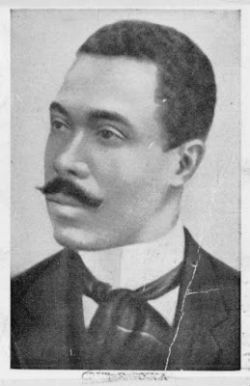Cruz e Souza was a Brazilian symbolist poet. He was the forerunner of the Symbolist movement in Brazil with the publication of his works “Missal” (prose) and “Buckets” (poetry) in 1893.
He is patron of the Catarinense Academy of Letters, representing chair number 15. Along with Alphonsus de Guimaraens, he is one of the most important poets of the movement in the country.
Cruz e Souza Biography
João da Cruz e Sousa was born on November 24, 1861, in the Santa Catarina city of Nossa Senhora do Desterro (now Florianópolis).
He was the son of former slaves, but his education was sponsored by a family of aristocrats (his parents' former owners). That's how he studied at the Liceu Provincial de Santa Catarina.
From a young age, he had a penchant for the arts, language and literature. In Santa Catarina, he worked as a writer for the abolitionist newspaper “Tribuna Popular”, in addition to being a director.

As a young man, he suffered racial discrimination, as he was prohibited from assuming the position of public prosecutor in Laguna / SC.
He later moved to Rio de Janeiro. In the capital of Rio de Janeiro, he was a contributor to the newspaper "Folha Popular" and to the magazines "Ilustrada" and "Novidades". In addition, he worked as an archivist at the Estrada de Ferro Central do Brasil.
Cruz e Souza's publications for newspapers were often based on the theme of racism and racial prejudice.
In Rio, he married Gavita Gonçalves in 1893 and had four children with her. Unfortunately, all died prematurely from tuberculosis.
This tragic moment in his life is reflected in some of his works that address the themes of loneliness, pain and suffering. After the incident, his wife, who suffered a lot, begins to have mental problems.
Cruz e Souza was also affected by tuberculosis. So, she decides to move to Minas Gerais in order to improve her health.
He died in the city of Curral Novo, in Minas Gerais, on March 19, 1898 at the age of 36, a victim of tuberculosis.
Curiosity
He was nicknamed “Dante Negro” in reference to the Italian humanist writer Dante Alighieri.
Characteristics of Cruz e Souza's works
Cruz e Souza's work is marked by musicality, subjectivism, individualism, pessimism, mysticism and spirituality.
Like the works of other Symbolist poets, his writings are full of figures of speech: metaphor, alliteration, synesthesia, etc.
Among the themes most discussed by the author are love, suffering, sensuality, death, religion, in addition to themes associated with abolitionism.
It is interesting to note that in his works and writings, we can see his obsession and predilection for the color white.
Main works by Cruz e Souza
Among his most outstanding works are:
- Missal (1893)
- Buckets (1893)
- Tropes and Costumes (1885)
- Evocations (1898)
- Headlights (1900)
- Last Sonnets (1905)
Poems by Cruz e Souza
To better understand the Symbolist poet's style and language, check out three sonnets below:
The death
Oh! what sweet sadness and what tenderness
In the anxious, afflicted look of those who die...
What deep anchors do they rely on
Those who penetrate that dark night!
From life to the cold veils of the grave
Vague trembling moments elapse…
And from the eyes the tears flow
As beacons of human Misadventure.
Then descend to the frozen gulfs
Those who on earth wander sighing,
With old hearts tantalized.
Everything black and sinister is going on
Baratro below, to sobbing echoes
Of the gale of Death rippling, howling...
Free
Free! To be free from slave matter,
tear off the shackles that plague us
and free to penetrate the Gifts that seal
the soul and lend it all the ethereal lava.
Free from the human, from the terrestrial bava
of the harmful hearts that freeze,
when our senses rebel
against the double-fronted Infamy that depraved.
Free! free to walk more pure,
closer to nature and safer
of his Love, of all justice.
Free! to feel Nature,
to enjoy, in universal Greatness,
Fruitful and archangelic sloths.
Perfumed mockery
when in the daze
To receive some news from you,
I go to the mail,
Which is at the end of the cruelest of streets,
Seeing so fed up,
Give an abundance that no one collects,
The hands of others, from newspapers and letters
And mine, naked – it hurts, it ails me…
And in a mocking tone,
I think everything mocks me, nicknames,
Laughs, apostrophizes me,
Because I'm alone and crestfallen, helpless,
At night walk around in my head,
More humiliated than a beggar, a worm...
Learn all about the Symbolist movement by reading the texts:
- Symbolism in Brazil
- Characteristics of Symbolism
- Symbolist Poetry



